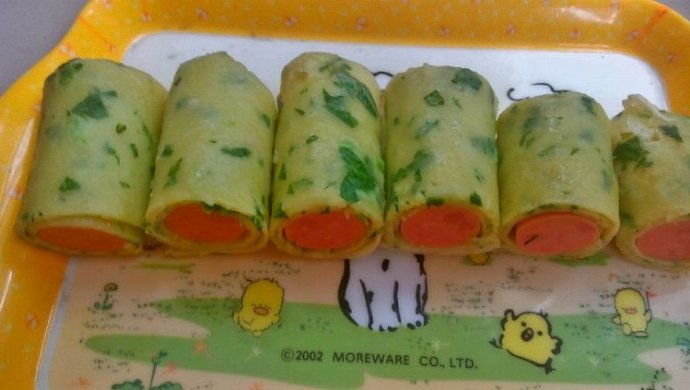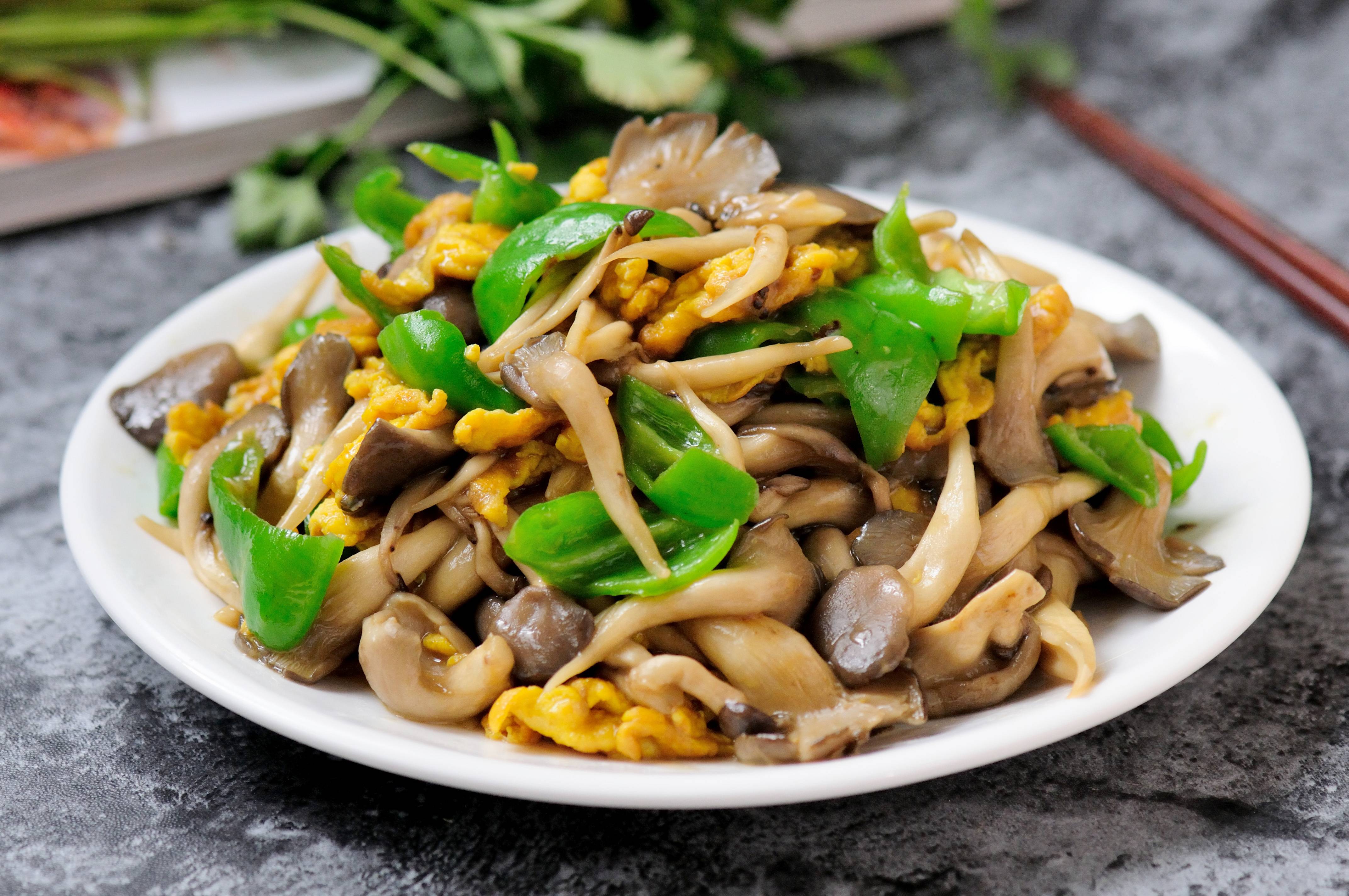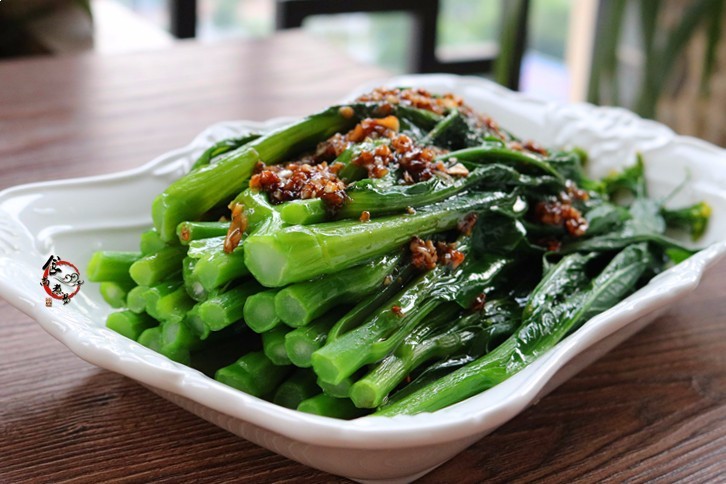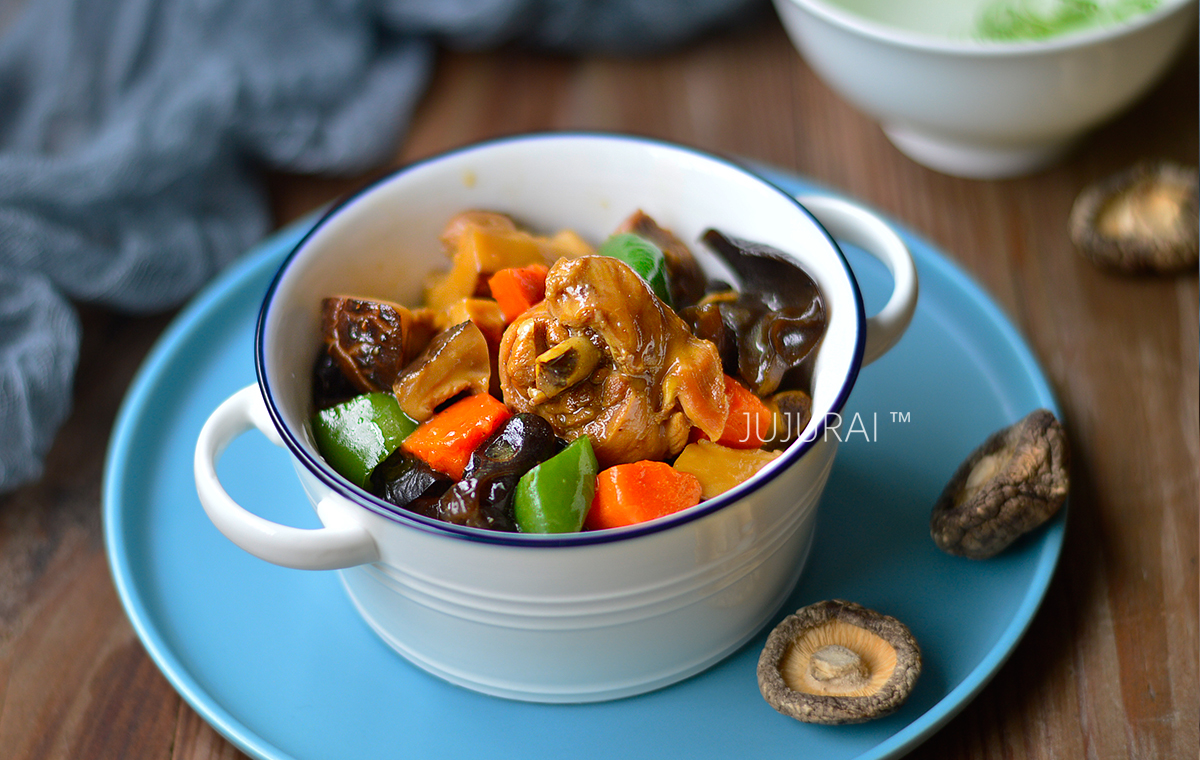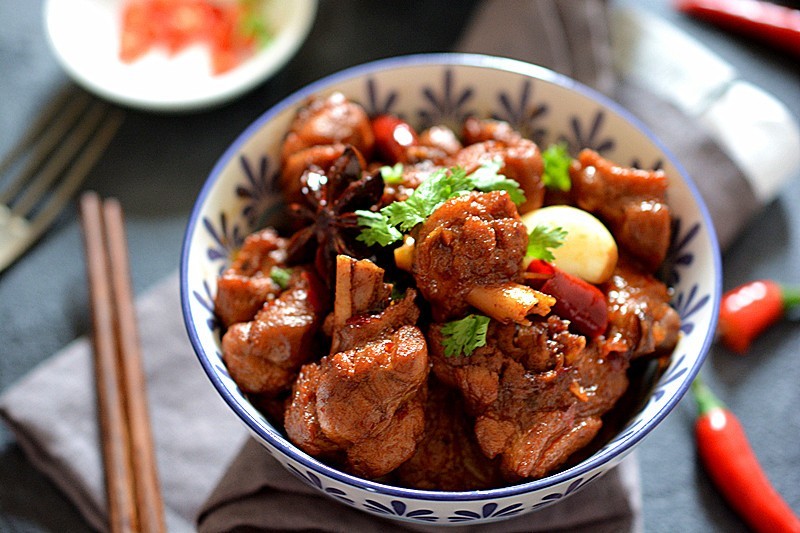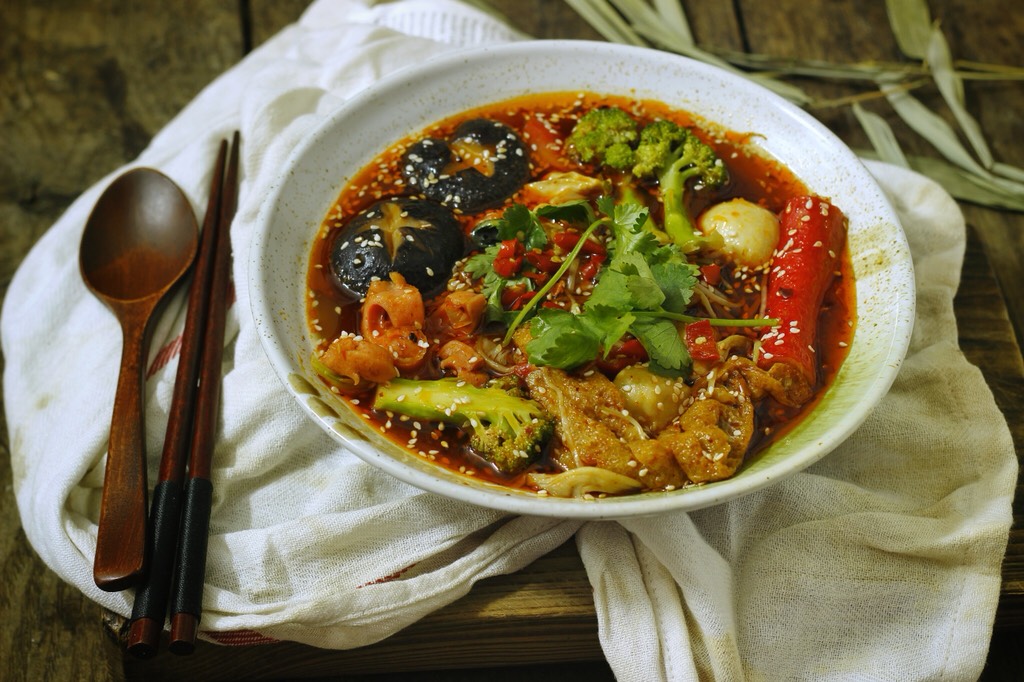Classic egg yolk cake
Ingredients
- Plain flour (water and oil skin) 350g
- White sugar (water and oil peel) 60 grams
- Water (water oil leather) 160 grams
- Butter (water-oil skin) 100g
- Cake flour (pastry) 200g
- Butter (pastry) 100g
- Salted duck egg yolk (filling) 24 pieces
- Red bean paste (filling) 400g First make the water-oil crust (step 1-
Steps
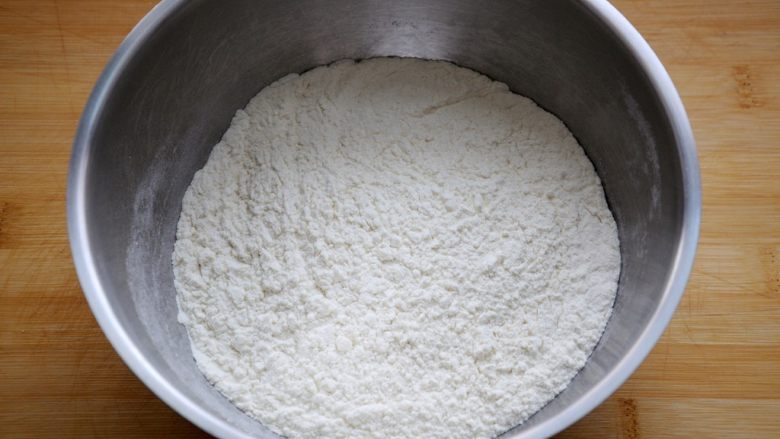
1. Make water-oil crust first: weigh out 350g of all-purpose flour, which is the ordinary flour you usually use, and put it in a basin. High-gluten flour is of course easier to knead to a complete level.Section, that is, it can pull out a very strong and tough film, but for Chinese dim sum, the finished product made with all-purpose flour has a crisper texture.
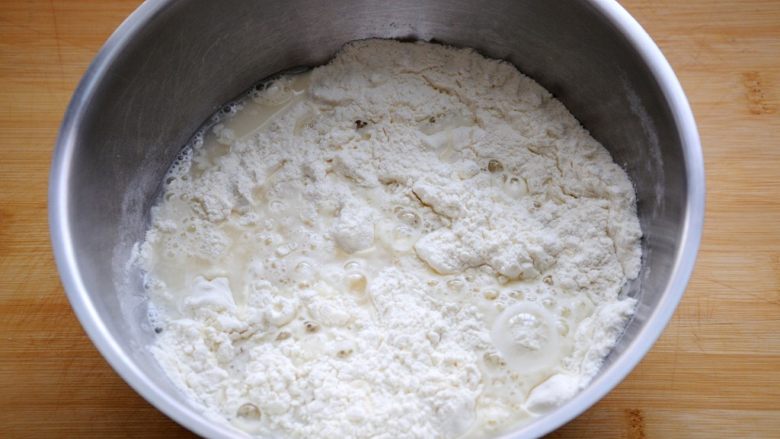
2. Pour in 60g white sugar and 160g water.
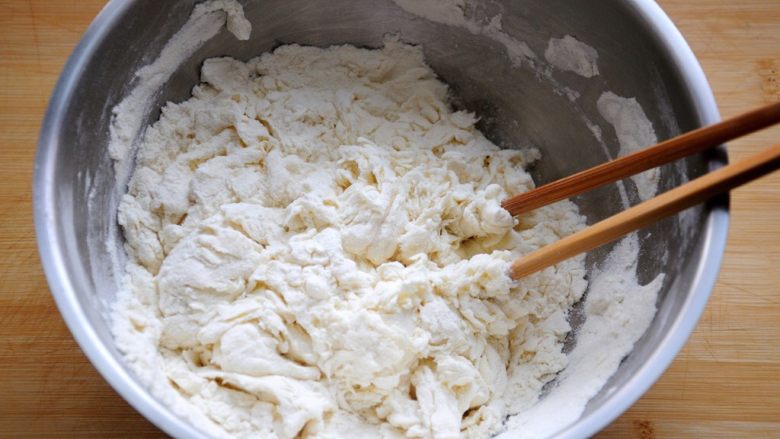
3. Use chopsticks to stir the flour into a fluffy shape, and then start kneading the dough. Otherwise, if you knead it directly with your hands, a lot of dough will stick to your fingers, which will be uncomfortable.
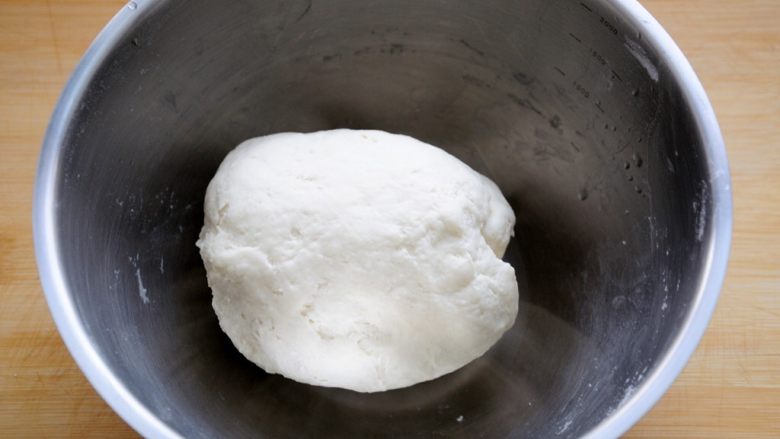
4. Preliminarily knead the dough into a ball with your hands. Since in the process of making water-oil skin, in addition to adding water, butter is also added later, so the amount of water should not be added too much, otherwise it will be kneaded in later. If you use butter, the dough will be too soft, which is not conducive to subsequent rolling and other operations. Of course, depending on the flour used by each company, you can add or subtract 10g of water to make slight adjustments. At this time, the dough should feel a little hard.
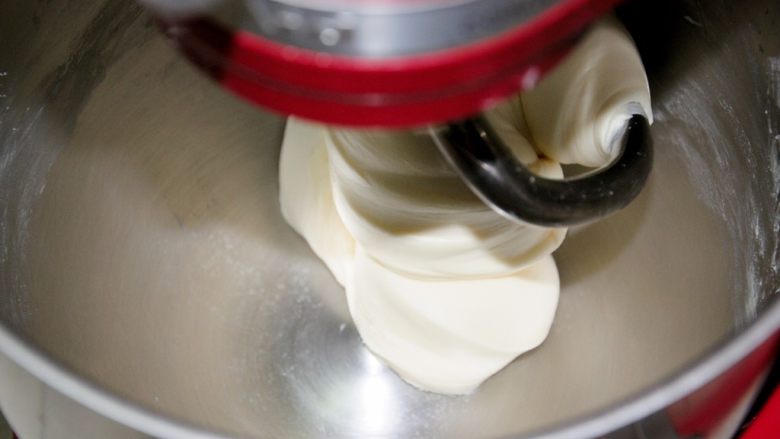
5. After kneading the dough for 5 minutes, it will become very smooth and not so hard. At this time, the dough can be pulled out into a thicker film and it has reached the expansion stage of the dough.
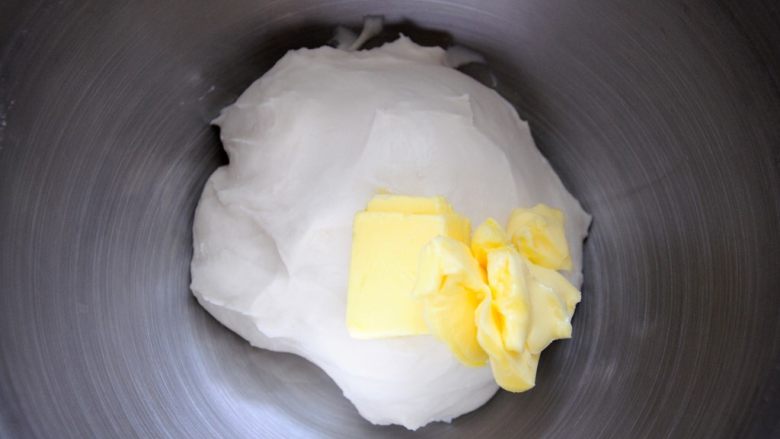
6. Add the butter that has been softened in advance to the dough. You can mix it with your hands at the beginning. Knead the butter as quickly as possible and initially blend it into the dough. This can improve the efficiency of the cooker. Otherwise, due to 600g There is really too little dough for it, so it can only lie at the bottom of the machine. In addition, the butter is relatively smooth, and the mixing hook of the machine can't catch the dough and is spinning there. If you use a smaller machine or use a larger amount of dough, this problem disappears.

7. Use 2 speeds for 8 minutes and 1 speed for 2 minutes. The dough will be kneaded into such a smooth shape. The efficiency is very high. If you knead it by hand, you can certainly knead it like this, but it will take a lot of effort and it will take a long time.
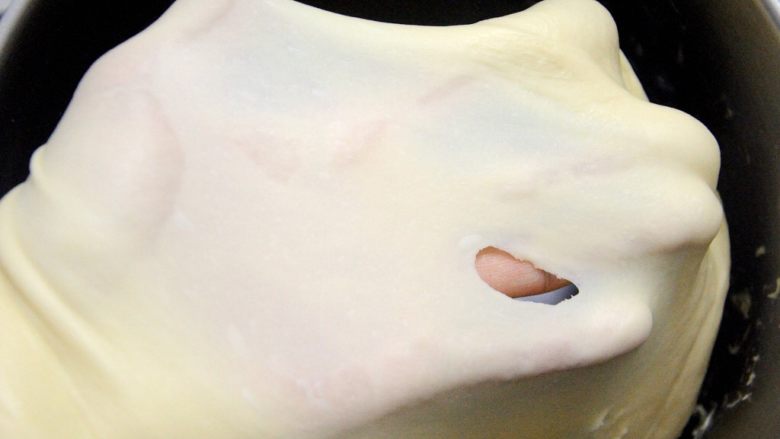
8. The best performance of the water-oil skin is that you can pull out a large and strong film with your hands. Even if there are holes, the holes are smooth. At this point, the water-oil skin is ready.
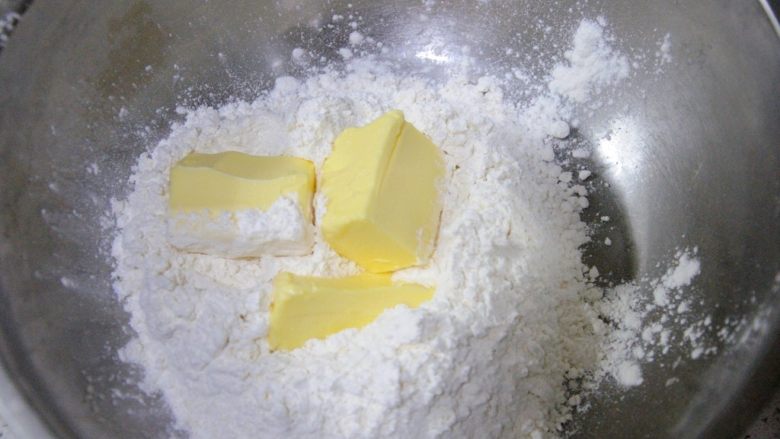
9. Make the pastry: While the chef machine is kneading the water-oil skin, we will make the pastry. This can save time. Put the softened butter into 200g of low-gluten flour. The butter must be made in advance. Soften, soften to the point where you can gently press it with your fingers. Now that the weather is getting colder, you can put it in a warm place indoors, or choose the fermentation function of the oven to slowly soften it. Do not use a microwave oven to bite it, as the result of the microwave oven may cause it to bite. One part becomes liquid and the other part is still very hard.
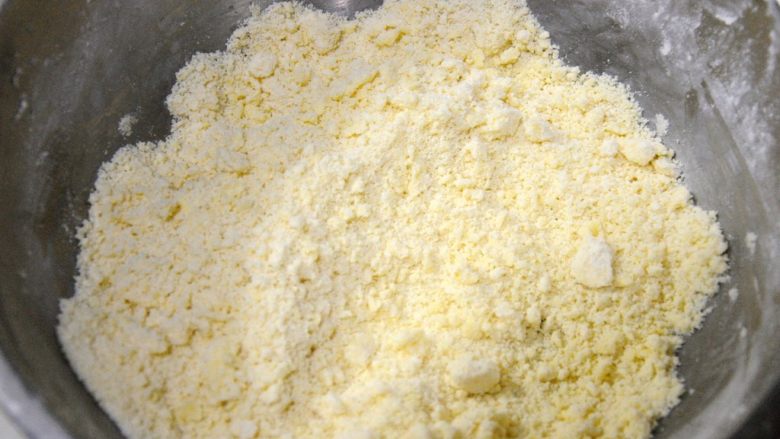
10. Grasp the flour and butter with both hands and gently knead it into small dough like this.
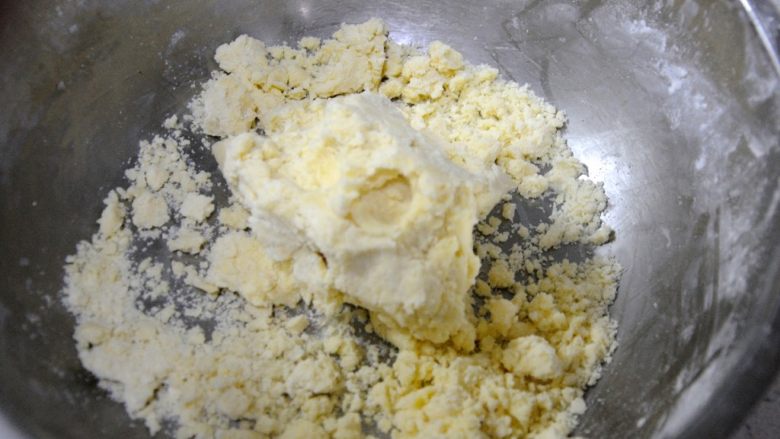
11. At this time, you can use a little strength to grab it. If the butter is softened enough, it will easily form a ball.
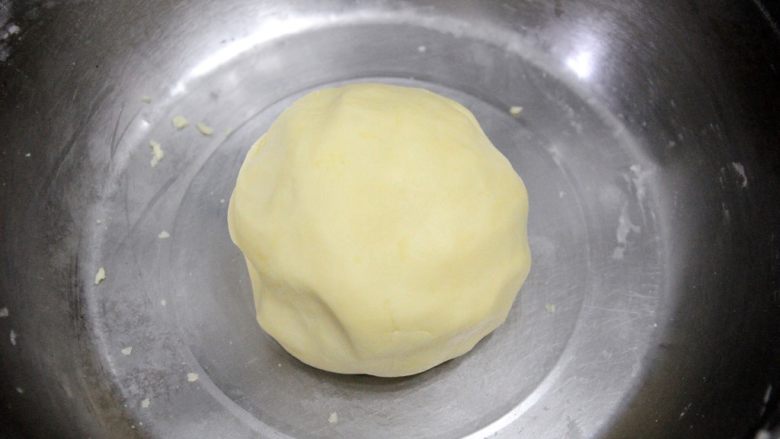
12. Just grab all the dough together and form a ball. The reason why we say grabbing, not kneading, is to avoid excessive kneading, which will cause the dough to become glutenous. It will shrink during the rolling process, affecting the final shortening effect. This is also the reason why the pastry chooses to use low-gluten flour to avoid gluten.
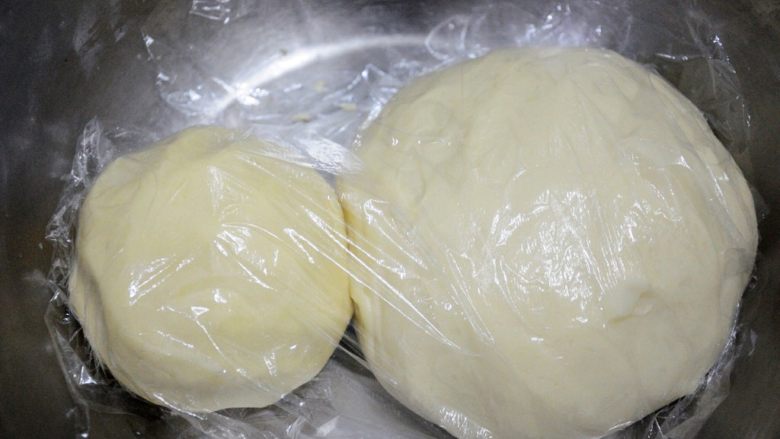
13. After the water dough and pastry are mixed, cover it with plastic wrap and let it rest for a while. The purpose of resting is to let the dough relax and facilitate subsequent rolling.

14. The time to relax the dough is used to peel the salted duck eggs. I don’t like to use vacuum-packed egg yolks when making egg yolk cakes. The yolks taste hard and are not sandy and oily like freshly peeled salted egg yolks. For the taste, I always buy salted duck eggs and peel the yolks. Although this is troublesome and wastes the protein part, it is still worth doing to make a perfect-tasting egg yolk puff pastry.
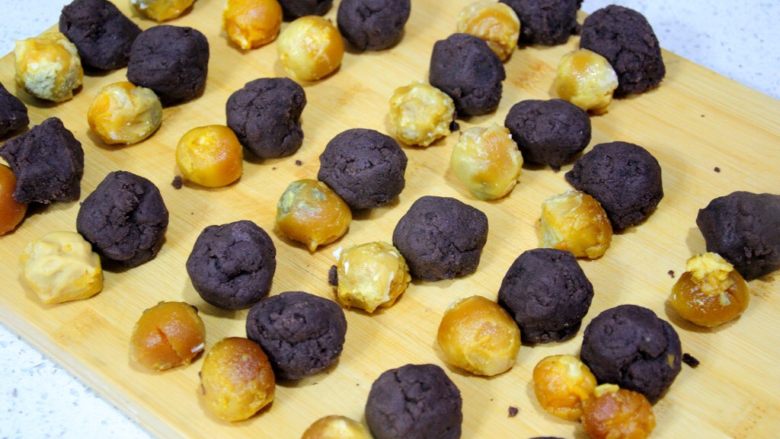
15. This is the peeled salted egg yolk, which is much better than the vacuum-packed egg yolk. It looks like it has a gritty texture and is also oily.
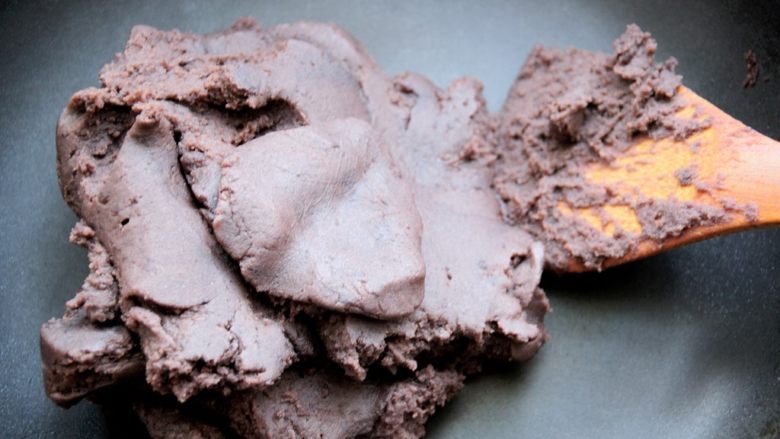
16. After the egg yolks are ready, prepare the bean paste. I fry the bean paste with red beans myself. I usually fry it in one pot at a time, freeze it in the refrigerator for later use, and heat it to thaw when using it. . The sweetness and softness of the bean paste you fry yourself can be freely controlled, and the taste is very pure. This is also incomparable to the finished bean paste sold outside. I have done a comparison specifically. The finished bean paste is not only very sweet, but also not that sweet. The white sugar stir-fried is sweet, but it is not known whether any sweetener is added, and the red bean paste does not have the aroma of being stir-fried on its own.
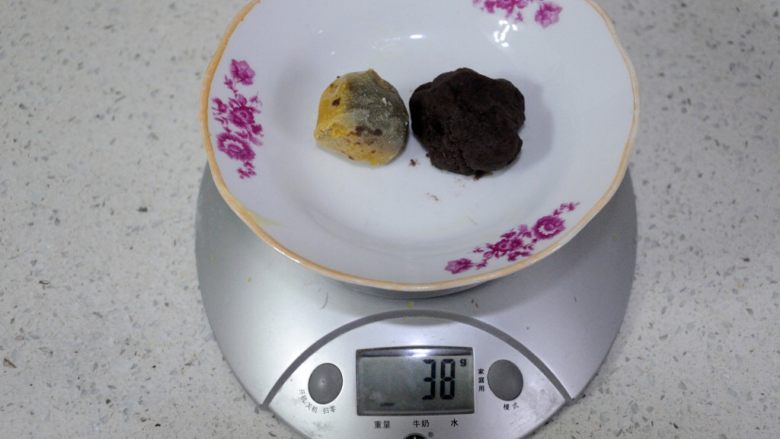
17. The weight of salted egg yolk ranges from about 15-20g. According to the weight of different egg yolks, adjust the amount of bean paste. The filling I usually use (egg yolk plus bean paste) weighs 38-40g. Among them, this kind of egg yolk puff pastry is relatively large and very plump in appearance, but the requirements for the puff pastry are relatively high. If the filling is large, it must be thinner to cover it. If you are not skilled, you can control the filling weight below 35g.
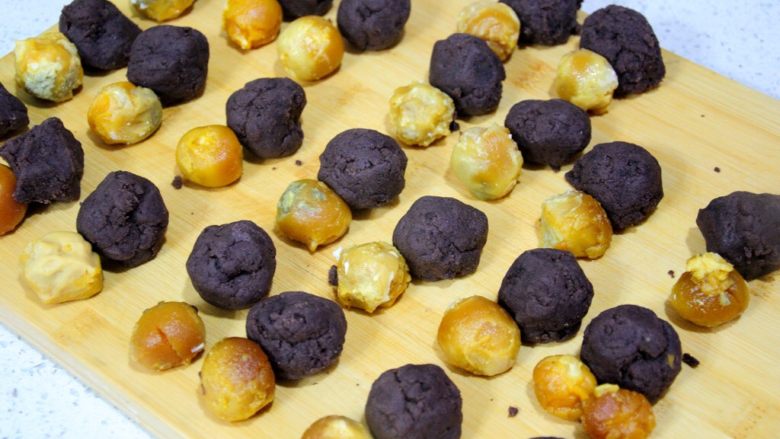
18. Prepare pairs of egg yolks and bean paste, and then wrap them together, which is more efficient. Weighing a pair to pack a pair is less efficient.
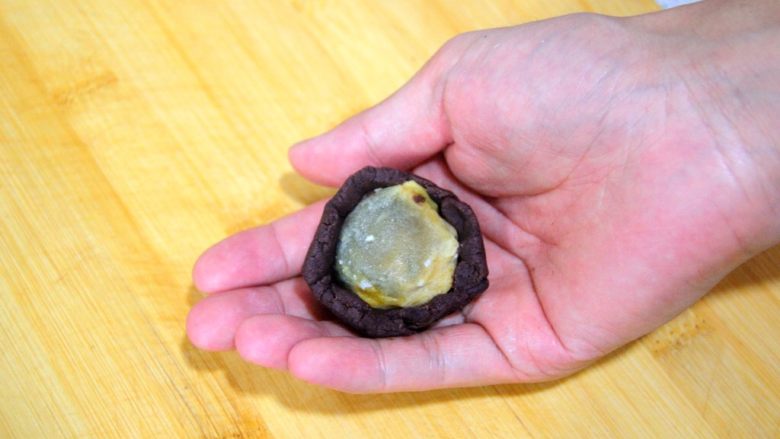
19. Wrapping egg yolk with bean paste is relatively simple. Flatten the bean paste onto the egg yolk and push it up from around until the bean paste wraps the egg yolk. It should be noted that the hardness of the bean paste determines the difficulty of this step. If the bean paste is too hard, the baked egg yolk cake will taste dry. If the bean paste is too soft and shapeless, the egg yolk cannot be wrapped. The best hardness is Can easily press a ball of bean paste into flakes without sticking to the palm of your handCan't be peeled off. The finished bean paste sold outside is generally soft and can be used directly as a filling for bread, but it is not easy to use for wrapping egg yolks. You can fry it in a pot over low heat for a while to evaporate the water to a suitable hardness before using it.
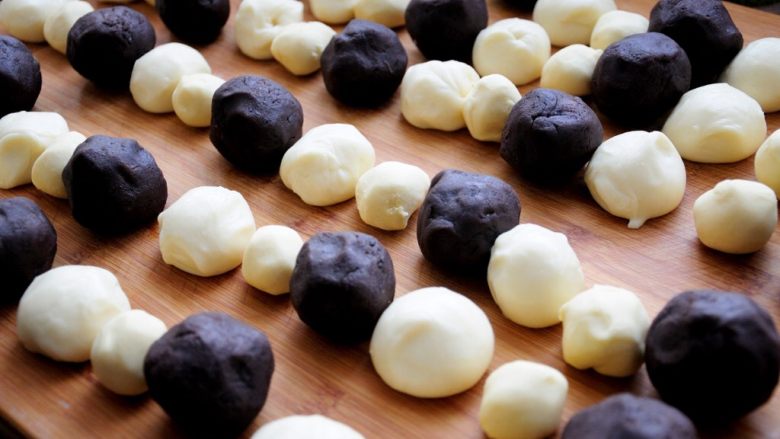
20. After the fillings are prepared, the water-based skin and pastry are also ready. Divide the water-based skin and pastry into 24 equal portions.
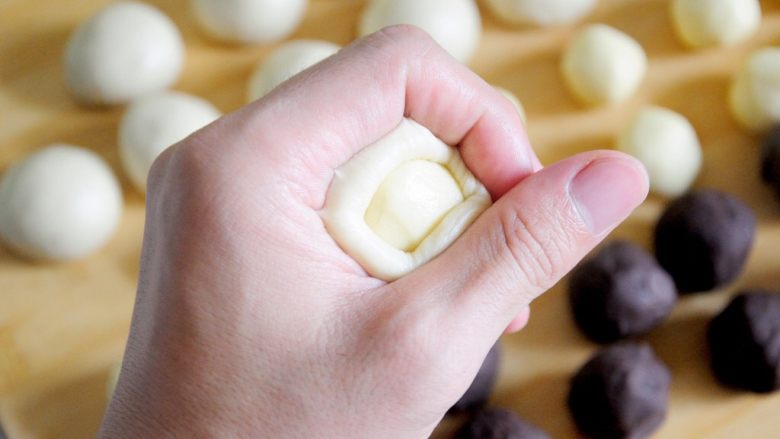
21. Making of pastry: undoubtedly the most critical step in the production process. The quality of the finished egg yolk pastry all depends on the production of pastry. Flatten the pastry to wrap it.

22. When closing, use the tiger's mouth to push up. Do not use the technique of wrapping a bun to pinch the pleats, otherwise a knot will be pinched. The tiger's mouth closing will be smooth in the end.

23. Wrap all the dough balls with dough balls and close the mouth.
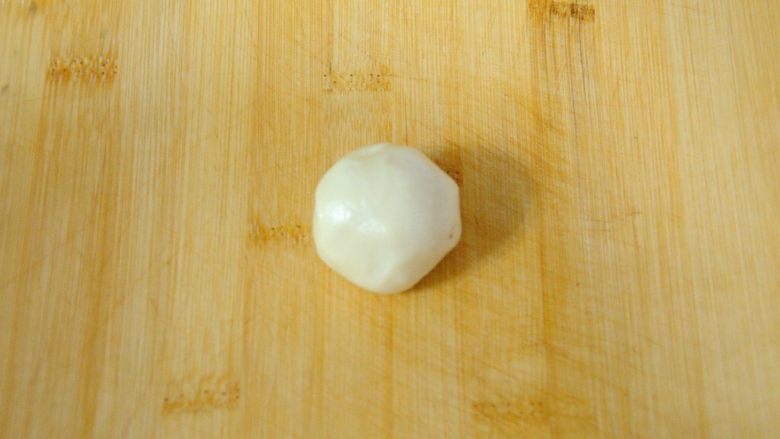
24. The next step is the rolling process of puff pastry. Take a piece of puff pastry dough.

25. On the other hand, place it with the seam facing up, and first flatten it gently with the palm of your hand. At this time, you can feel the importance of the softness and hardness of the oil crust and the pastry being similar. If the hardness is similar, the pastry will spread evenly in the oil crust when flattened. If the oil skin is very soft and the pastry is relatively hard, it will not be easy to make it evenly, which will also affect the final shortening effect.
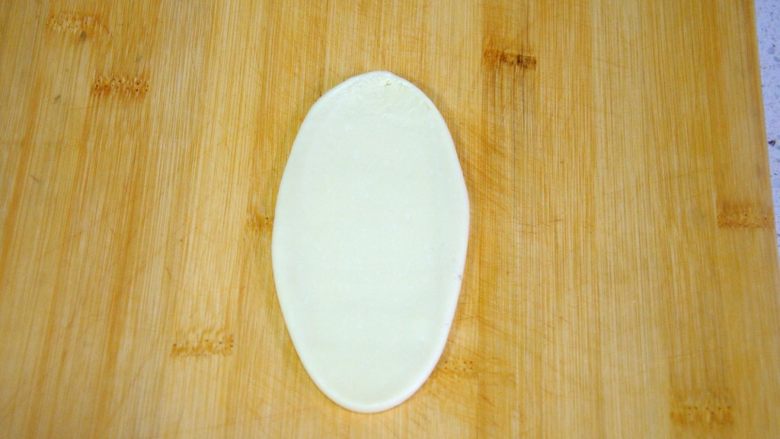
26. Flatten it and roll it into a cow tongue shape. The length is about 10-12cm. It does not mean that the longer you roll it, the more layers of puff pastry you will have. In theory, it is a rolled up layer. The more the number, the more layers of puff pastry will be. However, if the puff pastry is actually rolled out very long, the puff pastry will be very thin. After rolling multiple times, the puff pastry and puff pastry will stick together. This is called mixed puff pastry. This kind of puff pastry cannot be shortened and layered after baking, so don't be greedy for a long time in this step. Since the entire rolling process of puff pastry requires "two rolls, one fold and three rolls", 10cm is enough in this step. .
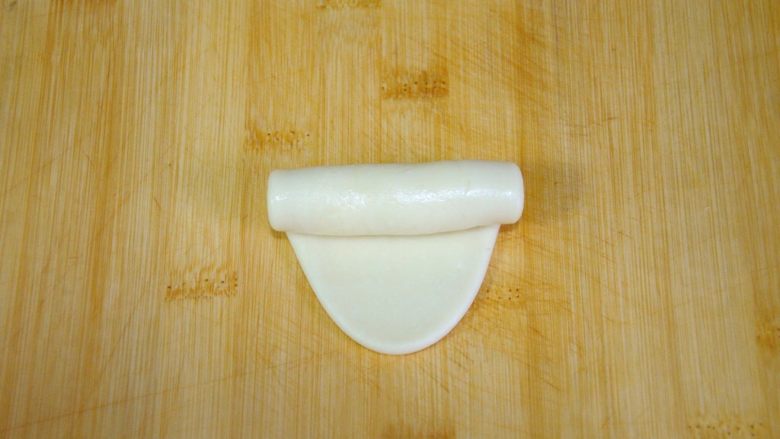
27. Roll it up from top to bottom, or from bottom to top, whichever way suits you best.
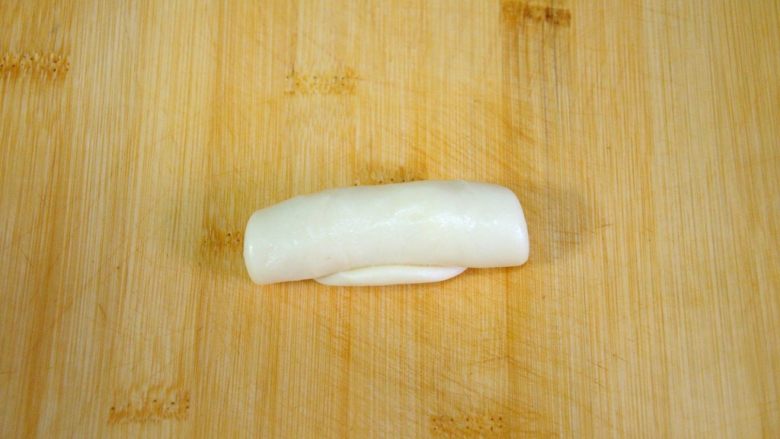
28. When rolled up, just close the edge and press it down.

29. The first rolling of the 24 pieces of puff pastry is completed in sequence. Although the puff pastry needs to wake up for 5-10 minutes after the first rolling is completed, the purpose is to allow the dough to relax for convenience. Roll it out next time, otherwise it won’t be loose enough and will shrink when rolled out. However, when we make it, we use the small puff pastry method, that is, we wrap, roll, and roll one by one. When the 24th roll is completed, the first rolled puff pastry has also woken up. In actual practice, This process is continuous during operation. The front part was rolled up and I woke up. The last part was rolled up and the front part was also awake.
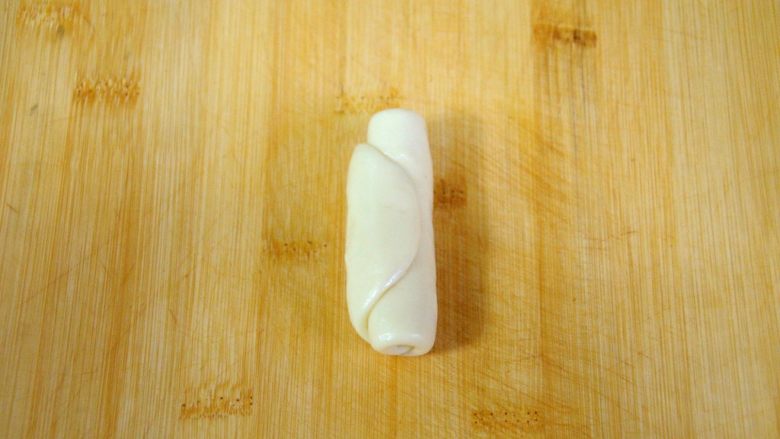
30. Take a puff pastry roll with the edge facing up.

31. Use the palm of your hand to flatten it gently, sighing gently, the same as before, don't be too long, within 10cm. If you use an ordinary rolling pin, you need to control the strength and length. Or just use a fixed-height rolling pin, which saves time and effort and rolls out more evenly.

32. Follow the same steps as before, roll it up after rolling out. This is the second rolling of the puff pastry.
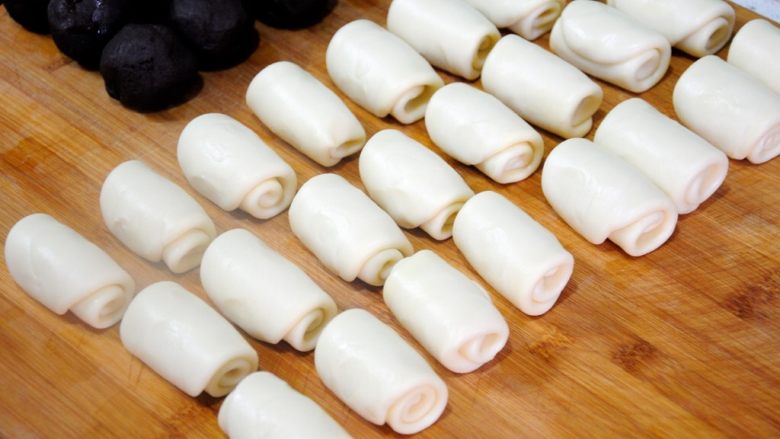
33. Complete the second rolled puff pastry ball. Same as step 29. When the 24th puff pastry dough is rolled, the first rolled puff pastry dough has also woken up. Just proceed to the next step.
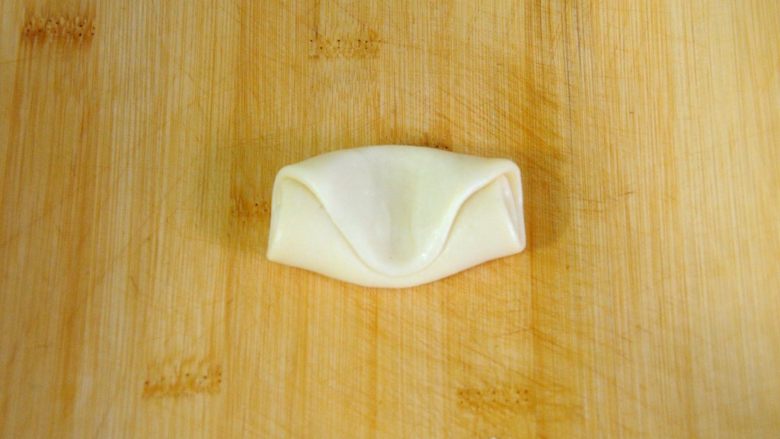
34. Take a puff pastry dough that has been rolled out twice and press it with your fingers in the middle.

35. Fold both ends in half to the middle and press gently to flatten.

36. Roll the top, bottom, left and right sides into sheets. This is also very important. Do not roll it hard like rolling dumpling wrappers, otherwise it will cause the skin to break and become crispy.
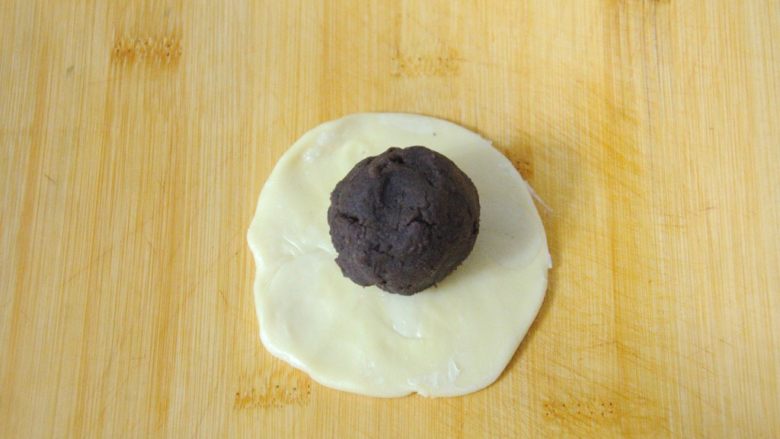
37. Take a filling and wrap it with rolled puff pastry.
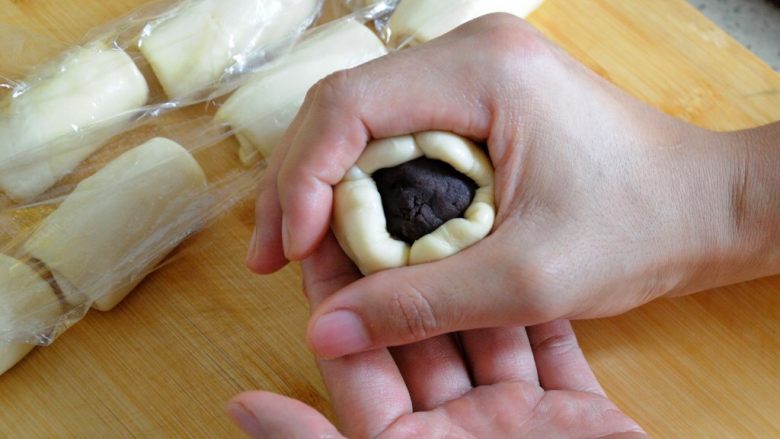
38. When closing, still adopt the closing method of pushing the tiger's mouth upward.
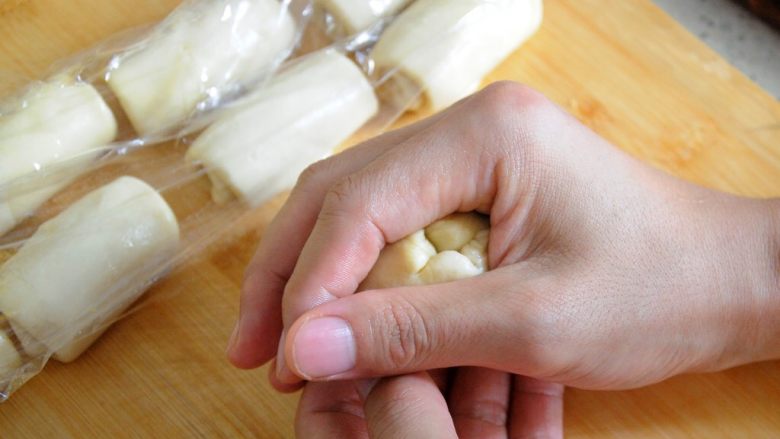
39. Finally tighten with the tiger's mouth.
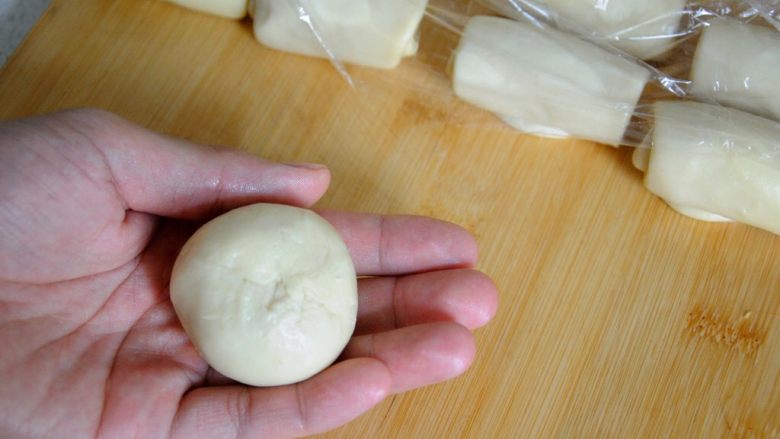
40. The closed egg yolk embryo is relatively flat, without lumps or folds like steamed buns. The mouth should be tightened, otherwise it will open during baking and the filling will be exposed.
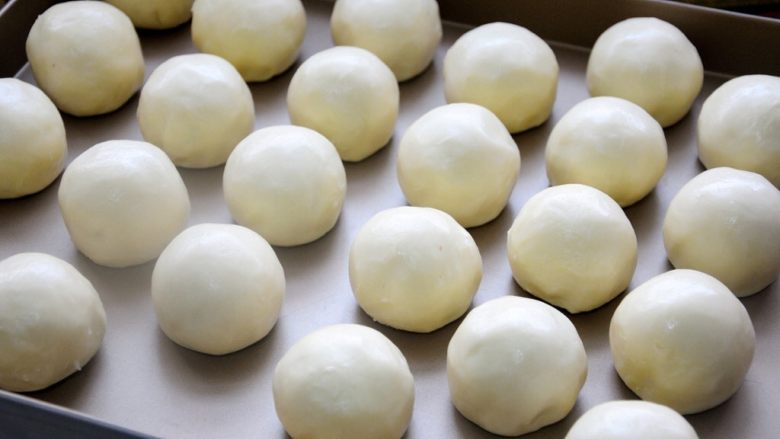
41. Complete 24 egg yolk crisps in sequence.
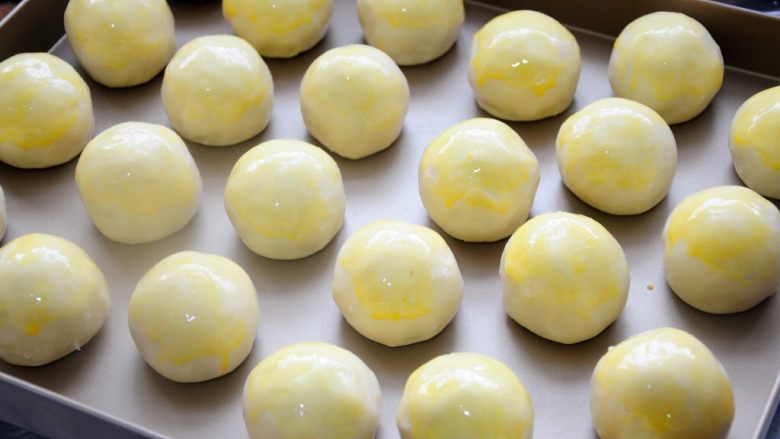
42. Brush with egg yolk liquid. The color of egg yolk liquid is prettier than that of whole egg liquid. The yolk color of wood-fired egg yolk is prettier than that of variety eggs. There are two different brushing methods for brushing with egg yolk liquid: If you like the appearance of the egg yolk cake to be intact without any cracks, sprinkle black sesame seeds after brushing the egg yolk liquid, and put it directly into the oven to start baking. If you like the feeling of cracked ice on the surface of the egg yolk cake, brush it twice with egg liquid. After the first brushing, slightlyLet it dry, and then brush it a second time, sprinkling black sesame seeds while brushing. If you wait until 24 brushes are finished, the black sesame seeds may not stick firmly. After sprinkling the black sesame seeds, let it dry slightly before putting it in the oven. During the baking process, the gradually expanding puff pastry will stretch out the solidified egg yolk, forming beautiful ice cracks.
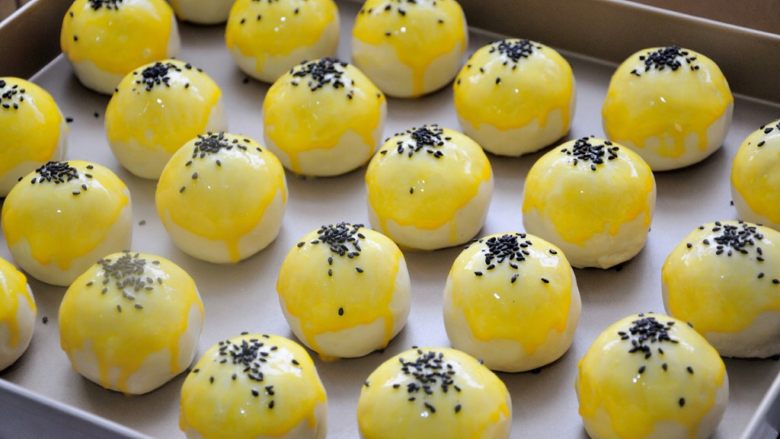
43. Personally, I prefer ice cracks and use the second method of brushing with egg liquid. When sprinkling black sesame seeds, pinch a little black sesame seed with your fingers, loosen it slightly, and it will naturally fall on the surface of the egg yolk cake. This way, the sprinkling will look better. Don't make the whole egg yolk cake sticky with sesame seeds everywhere. It won't be pretty.
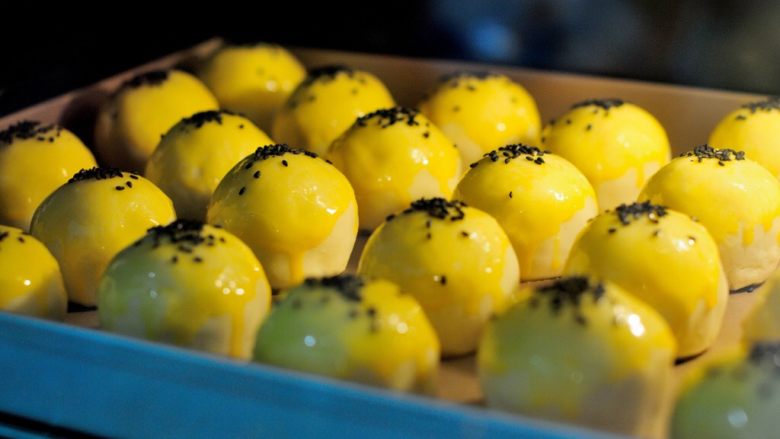
44. When you are ready to brush the egg wash, you can start preheating the oven to 170 degrees. Brush the egg yolk cake with egg wash and start baking in the oven, about 25-30 minutes. The baked egg yolk puff pastry will be larger than the original size. This is because during the baking process, the water in the puff pastry evaporates, breaking away the combined parts of the pastry and pastry, thus forming a layer. One layer of crisping effect.
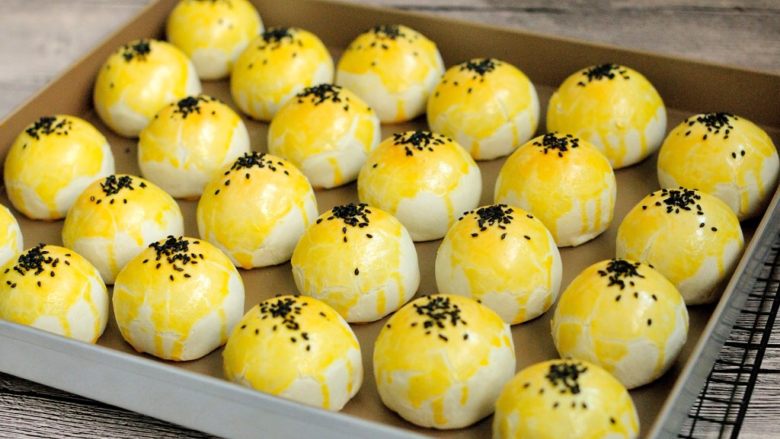
45. The baked egg yolk cakes are plump and straight, golden in color, so tempting.
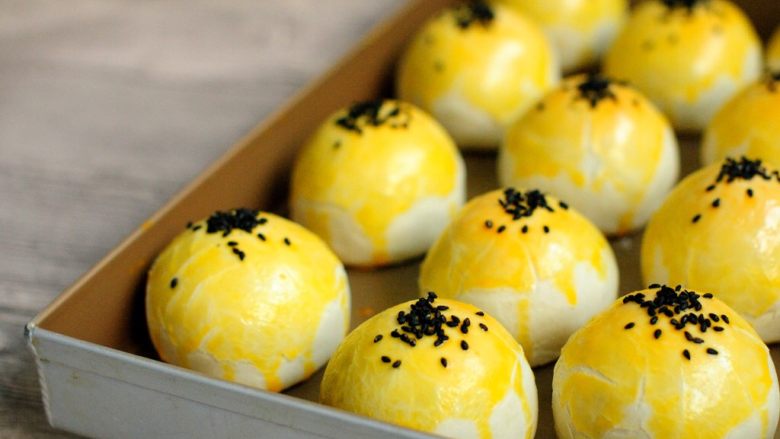
46. After taking it out of the oven, you can put the baking sheet on the baking grid to cool down. At this time, the temperature of the egg yolk cake is still relatively high and it will be too hot to hold.
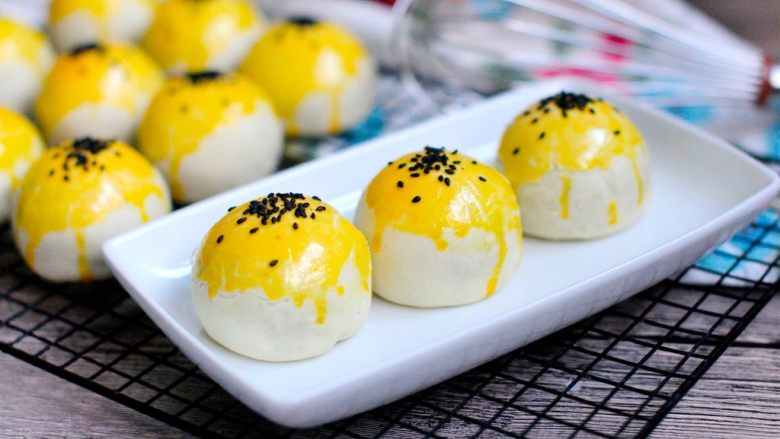
47. When it cools down a bit, you can take it out and place it on the baking net. Isn’t the finished egg yolk crispy effect great?
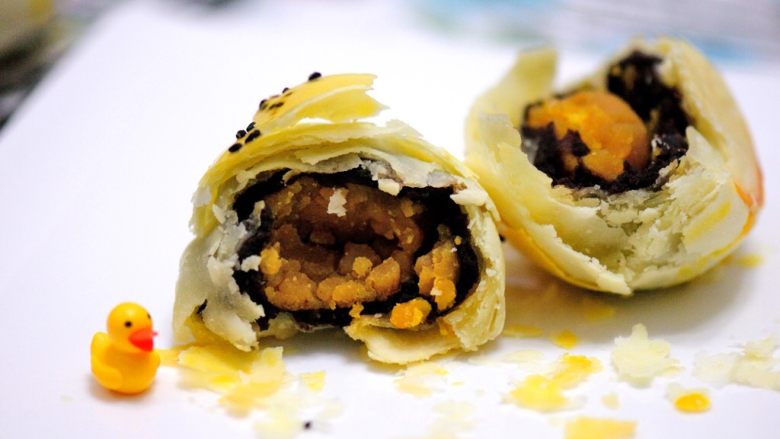
48. Open any one and look at the details of the egg yolk cake. It is rich enough.
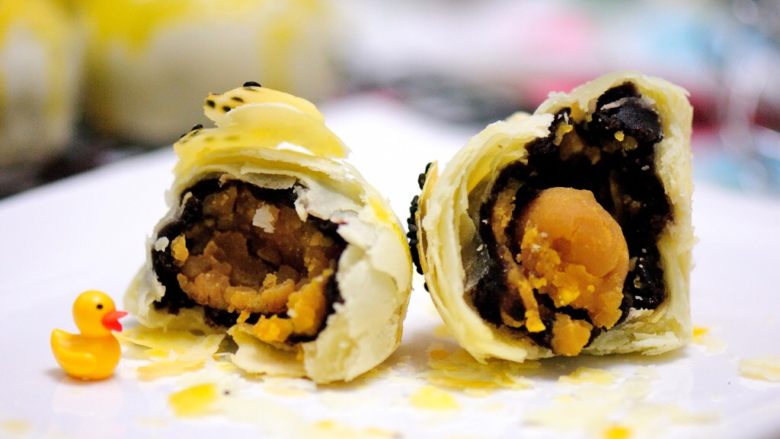
49. Just imagining one bite and the feeling of the layers of puff pastry splitting in your mouth gives you an inexplicable sense of satisfaction.
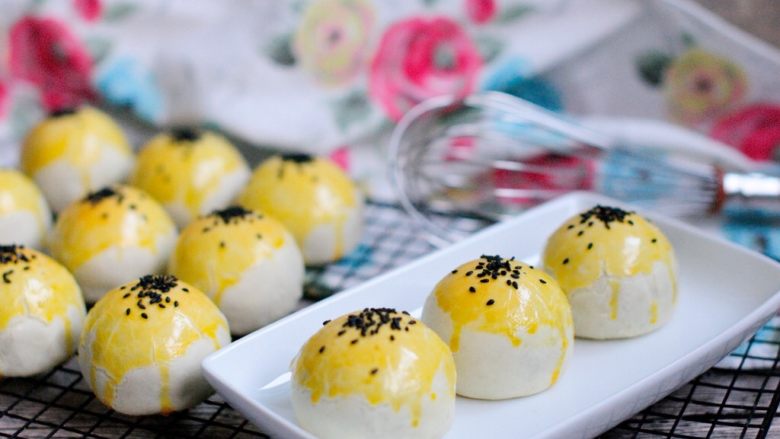
50. Perfect.
Tips
- Things that need to be reminded are written in detail in the corresponding steps. Here are a few nouns to explain, to facilitate understanding for those who have never done it before:
- 1. Water-oil dough: As the name suggests, it is a dough made of flour plus water and oil.
- 2. Pastry: a dough made of flour and fat.
- 3. Crisping: Also called puff pastry or puff pastry, it is a process of wrapping puff pastry with water-oil skin and rolling, rolling, folding and other processes to form puff pastry. It is divided into large puff pastry and small puff pastry.
- 4. Big puff pastry: Wrap the puff pastry directly with water-oil skin, like a big bun, then roll it out and fold it several times, and roll it up. The advantage of using the recipe is that it is fast and efficient, but the disadvantage is that the pastry is uneven and the quality is not high.
- 5. Small package of puff pastry: first add the water-oil skin and the puff pastry separately, and then operate them one by one, wrap the puff pastry with the water-oil skin, and then Fold the two rolls once and roll them out three times to form puff pastry. The advantage is that the pastry rises evenly and the dough is smooth and not easy to break. Of course, it is more labor-intensive, slow and inefficient. Suitable for fine pastries.
- Since we want to make classic high-looking egg yolk cakes, it doesn’t matter if we put in a little effort, so this recipe uses the method of making small bag cakes.

